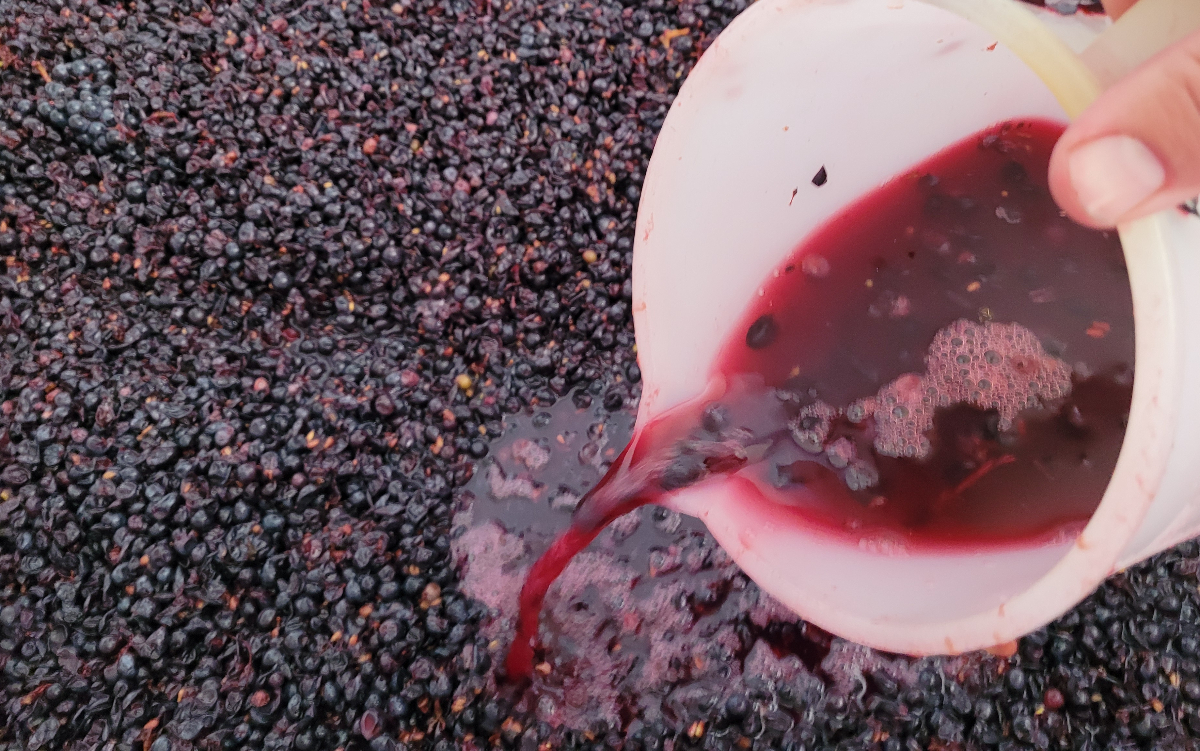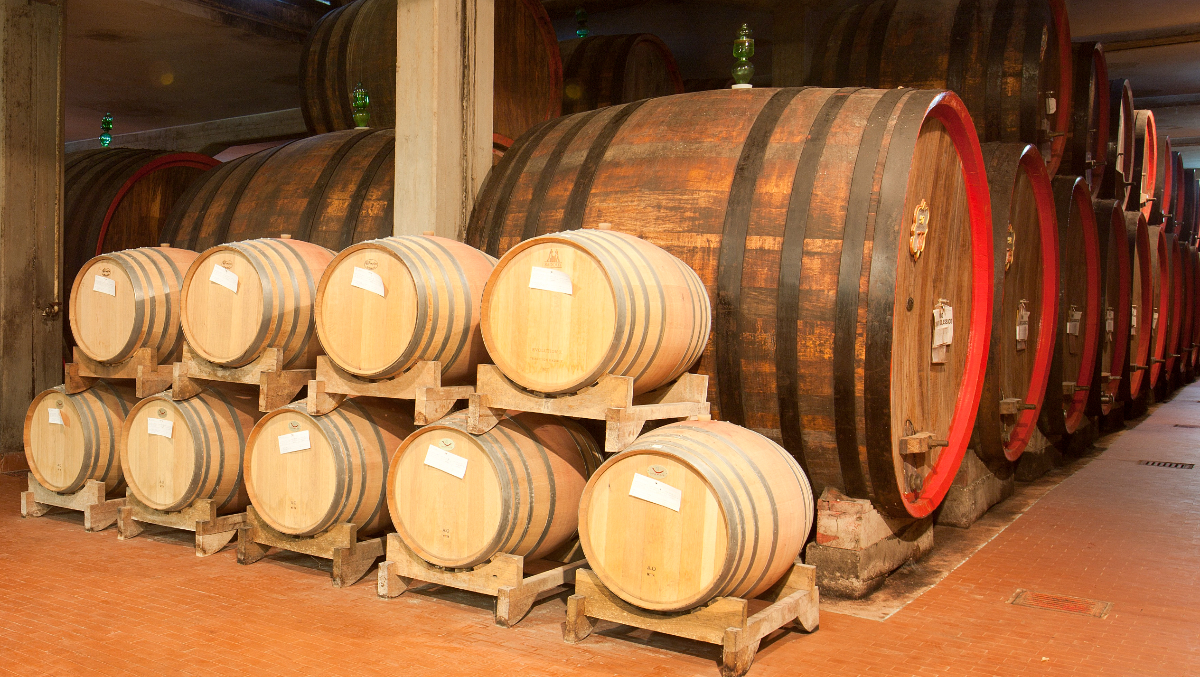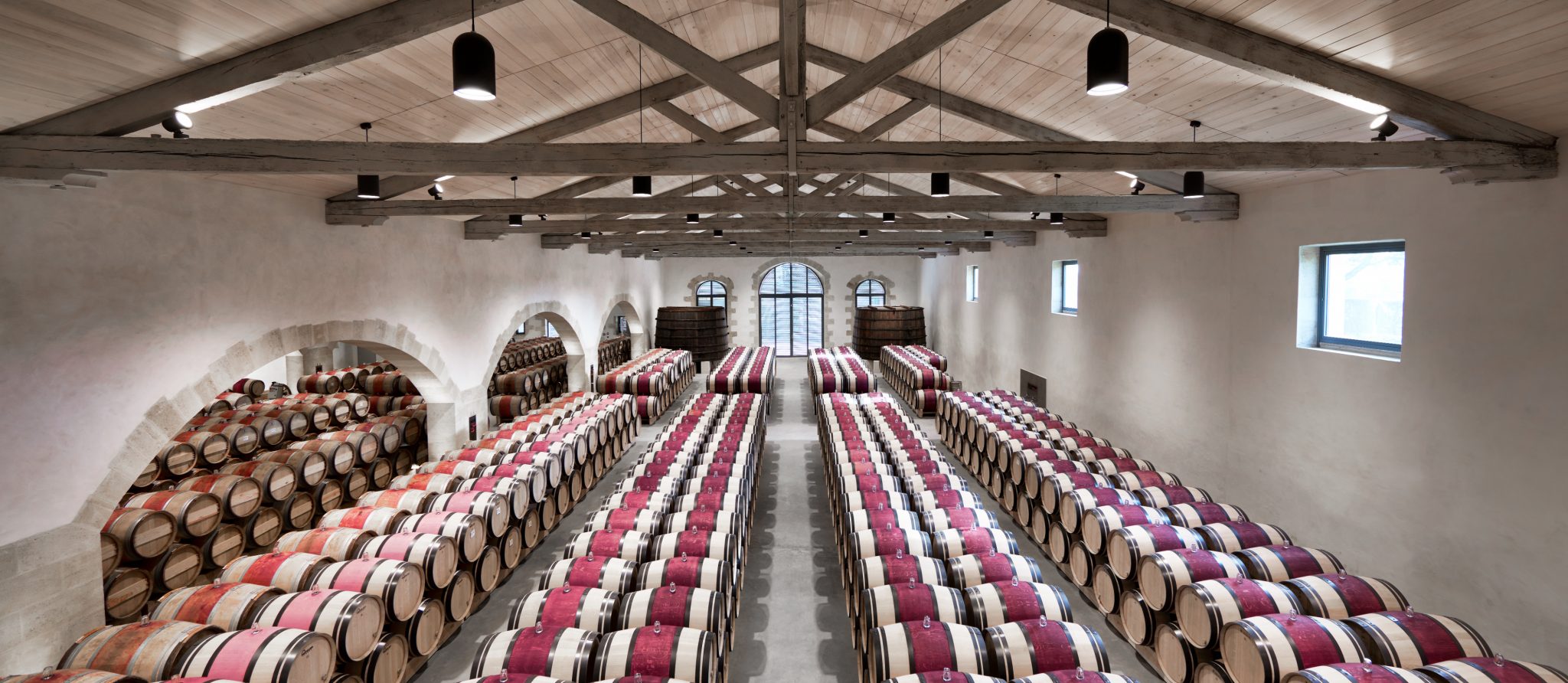Following the harvest of grapes from the vineyards, a winemaker can influence the style and flavour profile of their wines in many different ways. Our short guide to maceration, fermentation and maturation is a great introduction to understanding winemaking and its impact on the wine.
Maceration
Maceration is the result of keeping the juice in contact with the grapes skins, stalks and seeds. When in contact for a long period, both colour pigment, phenols and tannins of the grape are extracted. This can be done before, during and after the fermentation. The maceration ends once the skins, seeds, and stems have been removed from the juice or wine.
Colouring the wine – Most whites will go through a very short maceration and therefore can also be made from red grape varieties. They are usually made from free-run juice (meaning the juice runs freely from the skin of the grapes before being pressed) or pressed juice (with a short contact between skin and juice). Reds, on the other hand, will benefit from longer maceration to extract both colour and tannins present on the skin. Rosés macerate for a shorter period than reds, ranging from a couple of hours to a day, depending on the style and colour the winemaker wants to achieve. Orange wines are the results of white grapes fermented on the skin, giving the wine an orange colour with more structure.
Cold soaking – Colder temperatures halt the fermentation. Macerating grapes before any fermentation has taken place enables the extraction of individual elements from the grapes, adding different characteristics to the wine, depending on the varietal. For instance, winemakers may use this method to extract more flavour and colour while avoiding extracting harsh tannins.
Extended maceration – Once the fermentation is complete, keeping the wine in contact with the skins for extra time may optimise its flavour, colour and tannic structure.
Carbonic maceration – A form of whole-bunch fermentation which typically creates lighter reds, low in tannins with a soft fruity profile, usually best drunk young – a practice commonly associated with Beaujolais Nouveau. Unlike most fermentation where yeast turns sugars into alcohol, during carbonic maceration the initial fermentation is started in a sealed container filled with carbon dioxide, to which the whole bunches of grapes are added. Fermentation then starts from the inside out (intracellularly), where the CO2 breaks down the sugars, producing alcohol. This process also produces esters (a chemical compound) in higher quantities than normal, leading to stronger flavours such as strawberry and bubble-gum.

Fermentation
When a grape is pressed, the yeasts present on the skin start feeding on the natural sugar within the juice which results in the production of alcohol. Wild yeasts (naturally present on the grape) were originally used to make wine, however they can make the fermentation process slow and risk spoiling the wine. For this reason, cultured yeasts have been favoured in the last century. In recent years, some winemakers felt their wines were losing the typicity of their terroir and have started using indigenous yeasts again. When handled with care, they translate into greater complexity and truly express the uniqueness of the vineyard.
Cool fermentation – Modern wineries are usually equipped with temperature-controlled vats to ferment their wine. Fermenting wines at cooler temperatures helps to retain the freshness of the fruits as well as extract aromatic compounds known as esters. Lowering the temperature during peak fermentation causes higher ester levels which are responsible for the vast array of fruity and tropical aromas found in a wine. This method is mainly used for making whites.
Malolactic fermentation – Following the alcoholic fermentation, winemakers can either allow or prevent a second phase known as malolactic fermentation, which converts the sharp malic acid (which has a tart, green apple flavour) into round and softer lactic acid (which has a softer, sometimes creamy buttery flavour). This process adds a round texture to the wine and usually takes place when making reds. However, it may also be used to produce rich whites mainly from Chardonnay.
Barrel fermentation – Most wines are fermented in stainless steel, but some are fermented in oak barrels. This method is mainly used when making whites because white grape varieties tend to lack tannins. Tannins from the grapes are replaced with tannins from the barrel which adds texture to the wine.

Maturation
The vast majority of wines are meant to be bottled early and will age for a few months in stainless steel tanks before being bottled. This type of vessel is favoured by winemakers as it is neutral and can be temperature controlled. However, some wines may gain from longer maturation which will add complexity to the wine.
Ageing on the lees – Once the fermentation stops, the yeasts die and fall to the bottom of the vessel, forming a sediment called lees. Winemakers may decide whether to separate (rack off) the lees, or age the wine in contact with them to add complexity and texture. The longer the contact, the more biscuit and toasty aromas the wine will gain. This process, called autolysis, is always used to produce sparkling wines via the traditional method.
Oak barrels – Oak barrels bring character to a wine. Vanilla, coconut, leather, cedar and smoky aromas are all related to barrel ageing. Using new oak barrels will add both flavours and texture to the wine while old barrels will only smooth the texture allowing for a micro-oxygenation process to take place. Both size, type (French, American, Slovenian…) and the way the barrel is charred will have an impact on the final flavours. Less dense and with tighter tannins, French oak imparts more subtle flavours such as tobacco and leather with firmer, yet silkier tannins than American oak. The flavours from the latter are considered to be sweeter and add aromas of chocolate or vanilla.
Concrete eggs – With the natural wine movement gaining popularity, concrete is back in fashion as it does not have a direct impact on the wine flavours. Concrete eggs can be used for both fermentation and short maturation. The texture of the vessel adds micro amounts of oxygen to the wine (more than with stainless steel but less than with oak) while its shape allows a slow and natural movement of the yeasts adding texture and yeasty character to the wine.


